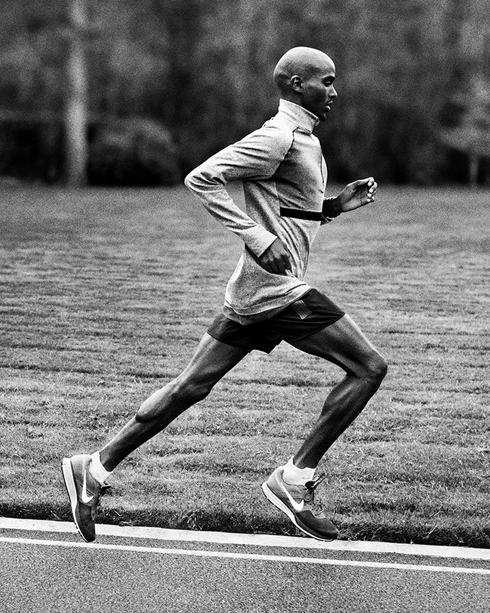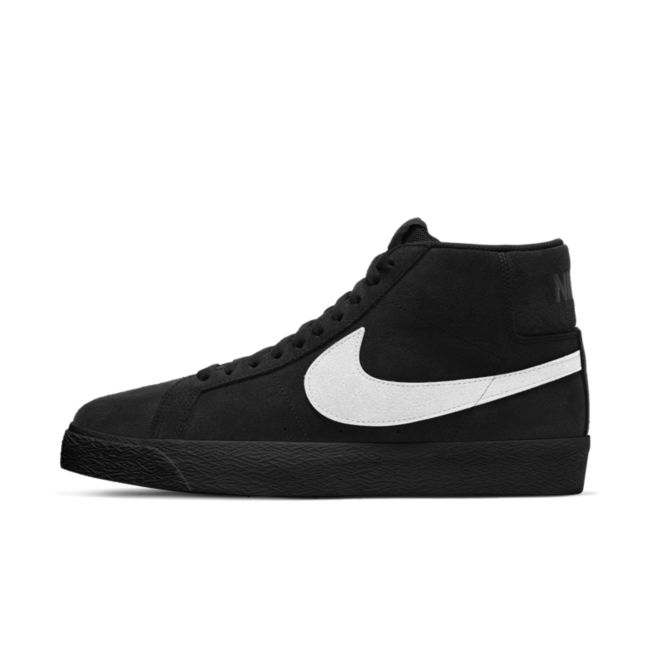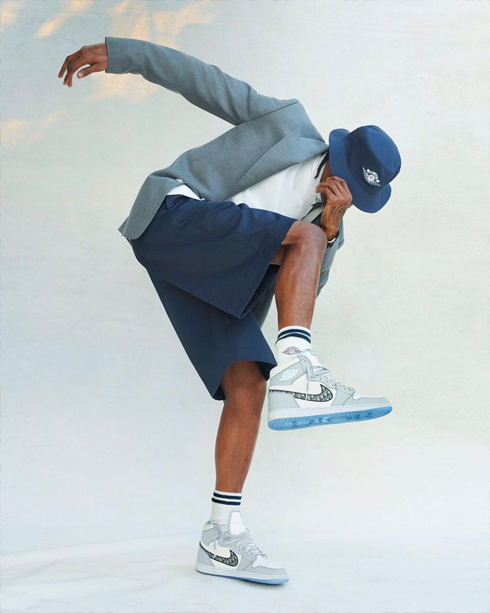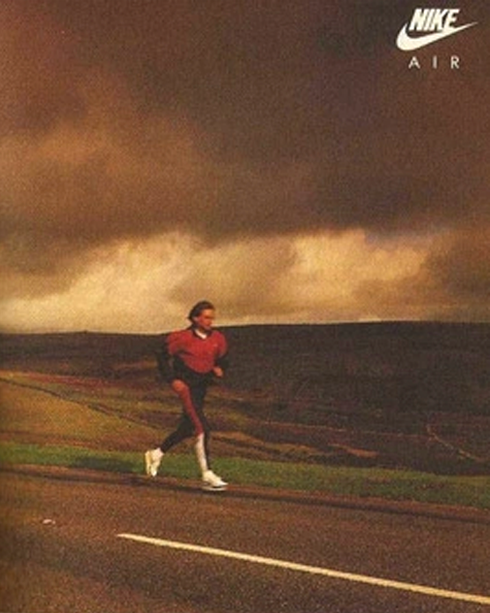Nike
Air Zoom
Nike’s high-performance cushioning system.


A new form of Air
Ever since its introduction into Nike’s suite of technologies back in 1977, Air cushioning has been an integral part of the brand’s output. For a decade it remained largely unchanged – that is until Tinker Hatfield designed the first Air Max shoe. With its visible Air, his groundbreaking sneaker was a huge success, which inevitably led to further innovations on the technology. The next iteration of Air cushioning would deliver a different kind of underfoot padding that was complex in its construction but no less remarkable in its results. It was called Zoom Air, and it brought a whole new dimension to the famous technology.
Creating tension
Developed over a number of years, Air Zoom was initially built as a performance technology to support athletes of all kinds. Running side-by-side with Air Max releases, it offered a different cushioning option; something flat, low to the ground and efficiently streamlined. Its secret was the synthetic fibres inserted within its durable Air pocket. These threads were tightly stretched and connected to the top and bottom of a pressurised Air unit, where they were held in a taut state. This helped to pull the Air cushioning into a flat position that brought the wearer close to the ground, providing increased stability. Zoom Air was also incredibly responsive, an attribute that resulted from its tensile fibres. As the foot pressed down on the Air Zoom unit, these fibres flexed and loosened before retracting back like a spring as the foot was lifted. While the Air fulfilled its usual role of softening the impact, the function of the fibres was to offer excellent energy return. This generated a soft step followed by a powerful push off the ground, making movements quicker and more efficient.

These features made Air Zoom technology perfect for sports which required fast movements, maximising performance by shaving a few milliseconds off an athlete’s sprint times. When the first Air Zoom shoe, the Nike Air Go LWP (Lightweight Performance), was released in 1995, this fact was emphasised on posters that showed off the design. Alongside a picture of star NBA player Tim Hardaway was a line of text that highlighted the technology’s ability to allow him to run faster and jump higher. The image also referred to Zoom Air as “Tensile-Air” cushioning, which is what Nike chose to call it in the early days as a reference to the tension in the thousands of fibres within the air pocket. However, it was not to last long as Tensile Air became Zoom Air later that year when it was used on the Air Zoom Flight 95, which was worn by another famous basketball player of the time, Jason Kidd. The Air Flight collection was already a successful one by this point, and its popularity helped to spread the Zoom Air name as the technology was rolled out to different Nike models.

Adaptability is the key
Basketball wasn’t the only sport to benefit from this new technology though. The Nike Air Go was part of a series of shoes under the LWP umbrella. This set also included the Air Scream LWP, which was designed for cross-training, the Air Challenge LWP, made as a tennis shoe and worn by Andre Agassi, and the Air Zoom LWP, a running shoe with Zoom Air in the forefoot. The range of sports and surfaces it was applied to so early on in its lifetime shows the versatility of the technology. It could be made into all sorts of different shapes in a variety of sizes, which meant that it could fit easily into any part of the sole, from the heel to the forefoot and even the full length of the shoe, to suit the particular movements of different sports. In 1997, it was this attribute that allowed Nike to stack a pair of Zoom Air units one on top of the other in the Air Foamposite One. Alongside this, the Foamposite contained a range of other Nike technologies which could have made the basketball shoe bulky and overweight, but with Air Zoom in its sole, it remained lightweight and responsive.

Cushioning for every sport
Shoes containing Zoom Air always offered these benefits, and by this time it was establishing itself as a popular cushioning system in numerous sports, including baseball and American football. Zoom Air made its way into the legendary Air Jordan series as early as 1996 and has since been added to retro models of the iconic Air Jordan 1. The cushioning was then put into the Mercurial football boot in 2001, with the popular shoe getting the first football-specific Zoom Air unit in 2022’s Air Zoom Mercurial. Later, in 2005, Lance Mountain introduced it into his SB Blazer, proving that the technology could enhance skateboarding as well. The cushioning has been an integral part of the long-standing Pegasus series of running shoes since it was first featured on the Pegasus 27 in 2010. In the same year, it also appeared in a performance athletics trainer called the Nike Zoom Vomero 5, a sneaker which has since been reintroduced as a popular lifestyle design.

On the feet of legends
As well as appearing in such a huge range of sports, Zoom Air has graced the feet of multiple athletes along the way, from baseball player Ken Griffey Jr. to one of the NFL’s most agile runners in Barry Sanders to world-famous distance runner Paula Radcliffe, who won the New York Marathon in the Air Zoom Marathoner in 2004. In basketball, the technology has been particularly well-liked, with numerous players wearing shoes containing it. The great Michael Jordan had it in his 12th signature shoe, designed by Nike legend Tinker Hatfield. Sheryl Swoopes, star of the Women’s NBA and the first female player to have her own Nike signature line, also had them incorporated into the Air Swoopes 2. Today, most of Nike’s basketball shoes have Zoom Air inside, so many modern players appear with the technology on their feet when on the courts.
An ever-evolving concept
With such big names donning Air Zoom designs, it’s clear that Nike has worked hard to keep its innovation relevant, making certain alterations over the years and ensuring that it continues to evolve. The first major update was introduced in 1998 on Tinker Hatfield’s Nike Air Zoom Talaria, which was given the first bottom-loaded Zoom Air unit, bringing it closer to the bottom of the outsole and leading to a more even distribution of the cushioning system. This offered a second option alongside top-loaded units, which had the Zoom Air closer to the top of the midsole so that the foot pushed more directly into it, creating a slightly different feel underfoot. Both systems have been used in subsequent Zoom Air models. Following this, in 1999, the Air Zoom Citizen featured the very first visible Zoom Air, with units in both its forefoot and heel. This finally allowed people to see the tensile fibres that gave their shoes such bounce. Then, in 2003, the Zoom Air Spiridon was released. It introduced a strong thermoplastic Pebax cage around the Zoom unit for the first time to improve stability and provide added protection while also elevating the heel above the level seen on previous shoes. Over time, Nike worked towards a full-length visible Zoom Air unit, finally achieving it on LeBron’s 10th signature shoe. In 2018, Zoom technology shifted again as Zoom Turbo was added to the Kyrie 5. The design of this forefoot air pocket, which was placed there specifically to cater to Irving Kyrie’s play style, gave the wearer multi-directional cushioning for even more support during pivots and lateral movements.

A giant of cushioning history
More than 25 years after the first use of Zoom Air, the technology continues to make its way into Nike’s shoes. It is an innovation which has evolved and improved along with the athletes it has supported, and, in doing so, it has earned its place alongside Nike’s other cushioning giants: encapsulated Air and Air Max. It has become the cushioning system of choice for the brand’s performance sport models, ensuring its status as one of the great footwear technologies of our time.



